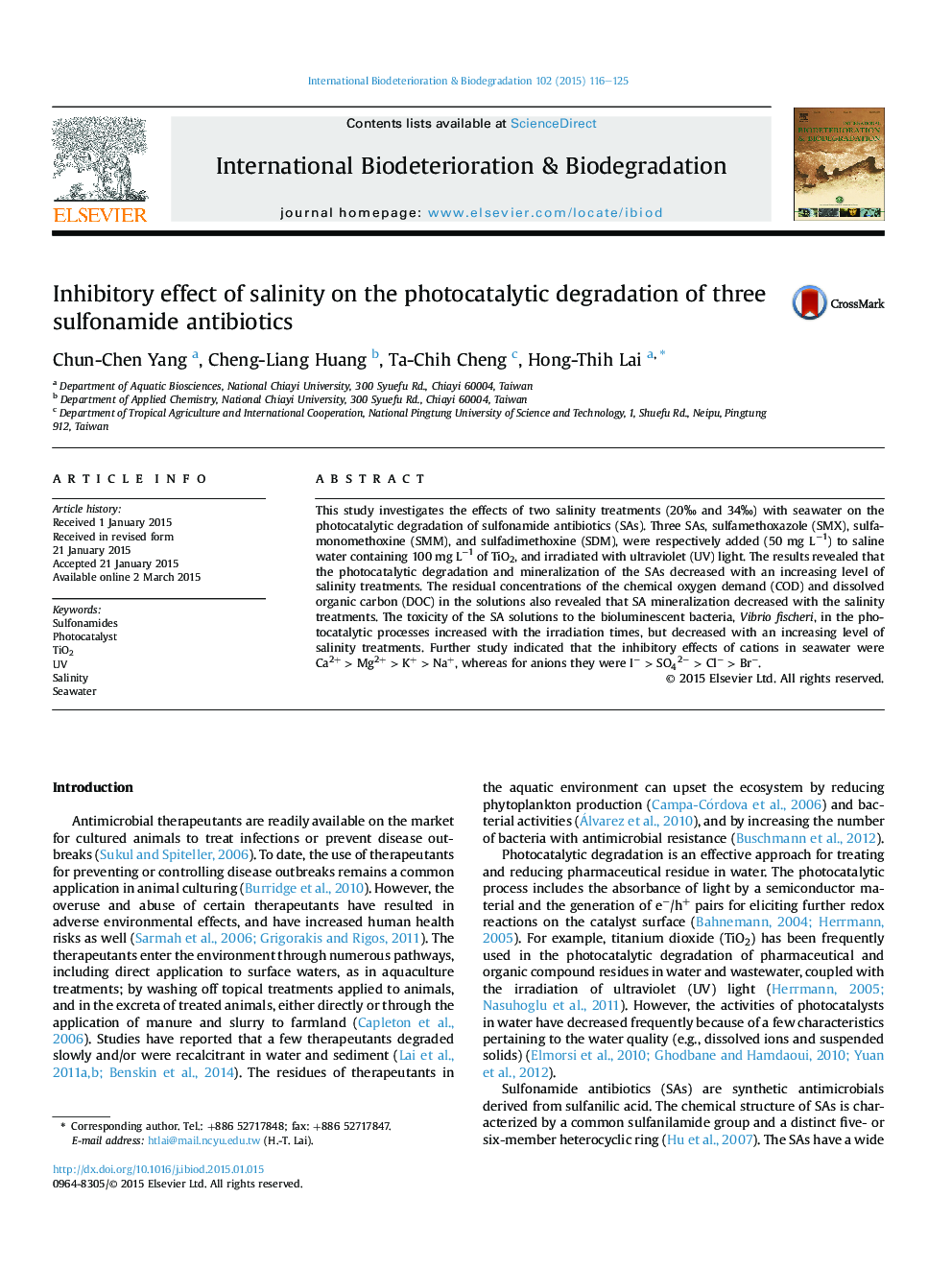| Article ID | Journal | Published Year | Pages | File Type |
|---|---|---|---|---|
| 4364357 | International Biodeterioration & Biodegradation | 2015 | 10 Pages |
•Salinity treatment reduced both the photolysis and photocatalytic degradation of the SAs.•SA solution toxicity decreased with salinity treatment.•The inhibitory effects of cations were Ca2+ > Mg2+ > K+ > Na+.•The inhibitory effects of anions were I− > SO42−SO42− > Cl− > Br−.•Mineralization in the photocatalytic processes of SAs can be inhibited by adding seawater.
This study investigates the effects of two salinity treatments (20‰ and 34‰) with seawater on the photocatalytic degradation of sulfonamide antibiotics (SAs). Three SAs, sulfamethoxazole (SMX), sulfamonomethoxine (SMM), and sulfadimethoxine (SDM), were respectively added (50 mg L−1) to saline water containing 100 mg L−1 of TiO2, and irradiated with ultraviolet (UV) light. The results revealed that the photocatalytic degradation and mineralization of the SAs decreased with an increasing level of salinity treatments. The residual concentrations of the chemical oxygen demand (COD) and dissolved organic carbon (DOC) in the solutions also revealed that SA mineralization decreased with the salinity treatments. The toxicity of the SA solutions to the bioluminescent bacteria, Vibrio fischeri, in the photocatalytic processes increased with the irradiation times, but decreased with an increasing level of salinity treatments. Further study indicated that the inhibitory effects of cations in seawater were Ca2+ > Mg2+ > K+ > Na+, whereas for anions they were I− > SO42−SO42− > Cl− > Br−.
